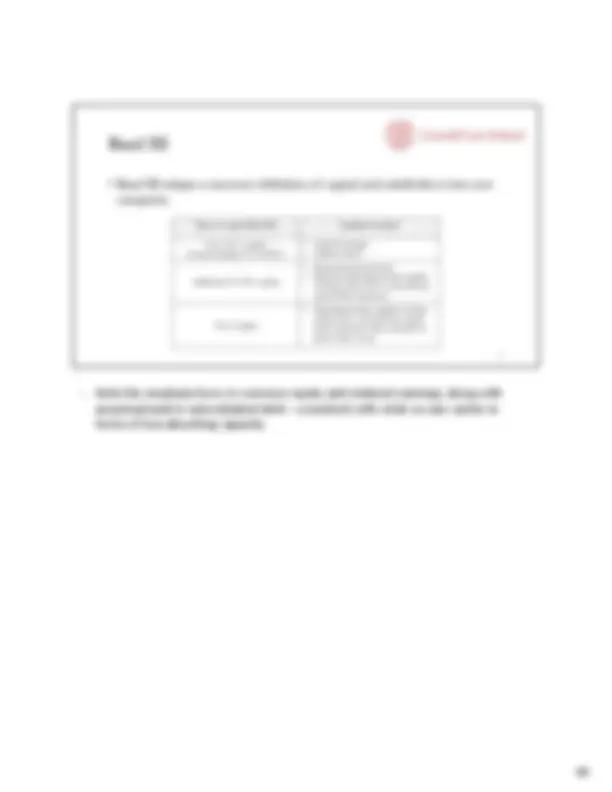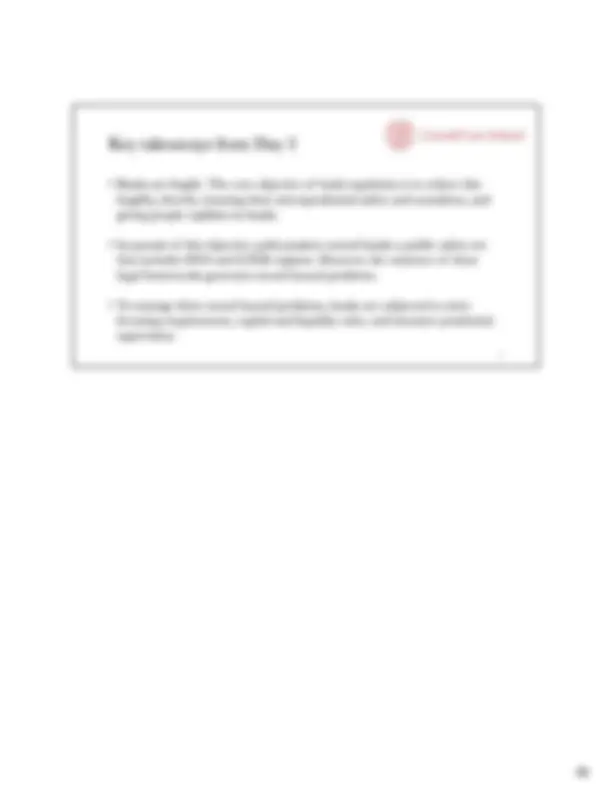











































Study with the several resources on Docsity

Earn points by helping other students or get them with a premium plan


Prepare for your exams
Study with the several resources on Docsity

Earn points to download
Earn points by helping other students or get them with a premium plan
Community
Ask the community for help and clear up your study doubts
Discover the best universities in your country according to Docsity users
Free resources
Download our free guides on studying techniques, anxiety management strategies, and thesis advice from Docsity tutors
The concept of financial regulation and its role in ensuring the safety and soundness of banks, focusing on microprudential regulation and the importance of bank balance sheets. It discusses the definition of a bank, the structure of balance sheets, the fragility of the relationship between assets and liabilities, and the impact of deposit runs on banks. It also touches upon the concepts of moral hazard and regulatory forbearance.
What you will learn
Typology: Assignments
1 / 49

This page cannot be seen from the preview
Don't miss anything!









































